Author: Ray Found
There are a few important factors when it comes to bitterness in beer, two of the most commonly focused on being the percentage of alpha acid (AA%) in hops and the level of bitterness (IBU) contributed based on the amount of time hops spend in the boiling wort. While many brewers take as a given that a 60 minute hop addition is used only to impart bitterness and contributes little in the way of flavor or aroma, others believe even early hop additions add something to a beer’s character.
It’s not uncommon to see a recipe for a classic beer style, such as English Mild or German Pilsner, include the use of a single hop variety. When brewing these types of beers, the amount of hops used to achieve the proper level of bitterness is solely a function of AA%. Inspired by the results of our last bittering hops xBmt focused on cohumulone levels, I began to wonder if the type and amount of hops used for bittering impacted a beer’s character in some noticeable way. If it’s true that early kettle additions contribute only bitterness, then a beer dosed with a large portion of a low AA% hop ought not differ much in character from a beer bittered to the same IBU with a small amount of a high AA% hop. Unable to find much more than anecdotal stories on the topic, I figured it was time to put this one to the test!
| PURPOSE |
To evaluate the differences between 2 beers of the same recipe bittered to the same expected level (IBU) with hops of different AA%.
| METHOD |
Taking a page from Derek Springer’s Five Blades Brewing blog, I decided to make a Vienna Lager with a simple grain bill and a single 60-minute hop addition, which I figured would help to isolate the variable being tested.
Simple Vienna Lager
Recipe Details
| Batch Size | Boil Time | IBU | SRM | Est. OG | Est. FG | ABV |
|---|---|---|---|---|---|---|
| 11 gal | 60 min | 25.6 IBUs | 11.5 SRM | 1.057 | 1.012 | 5.9 % |
| Actuals | 1.057 | 1.012 | 5.9 % | |||
Fermentables
| Name | Amount | % |
|---|---|---|
| Vienna Malt (Gambrinus) | 21 lbs | 97.67 |
| Pale Chocolate Malt | 8 oz | 2.33 |
Hops
| Name | Amount | Time | Use | Form | Alpha % |
|---|---|---|---|---|---|
| Saaz | 60 g | 60 min | Boil | Pellet | 3.6 |
| Magnum | 14 g | 60 min | Boil | Pellet | 15.7 |
Yeast
| Name | Lab | Attenuation | Temperature |
|---|---|---|---|
| Saflager Lager (W-34/70) | DCL/Fermentis | 75% | 48°F - 59°F |
Download
| Download this recipe's BeerXML file |
A couple days ahead of time, I setup my RO system to collect the water I would need for this brew day, a process that can take some time. I later adjusted the water with minerals to achieve my target profile.
I started the brew day by gathering my gear, weighing out my grains, then running them through my mill, this time on the grass to avoid making a mess in the garage. I’m learning!
With the strike water heated, I mashed in and just about hit my target temperature on a single large batch that would be split between two kettles pre-boil.
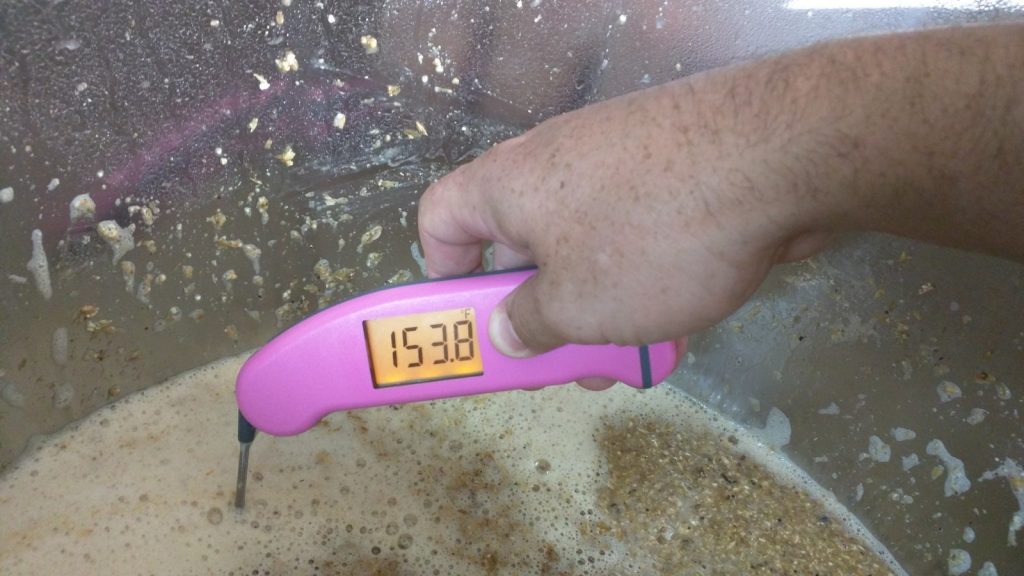
I set my timer for 60 minutes and waited…

When the mash was complete, I performed a standard batch sparge, collecting all of the wort in a single kettle. I then stirred to ensure homogeneity before transferring exactly half of the wort to a second kettle. I lit the burner under the Saaz batch 20 minutes before the Magnum batch, which gave me enough time for chilling and transferring without getting too overwhelmed. The only hop additions were added at the beginning of each boil, 60 grams of Saaz to one and 14 grams of Magnum to the other.
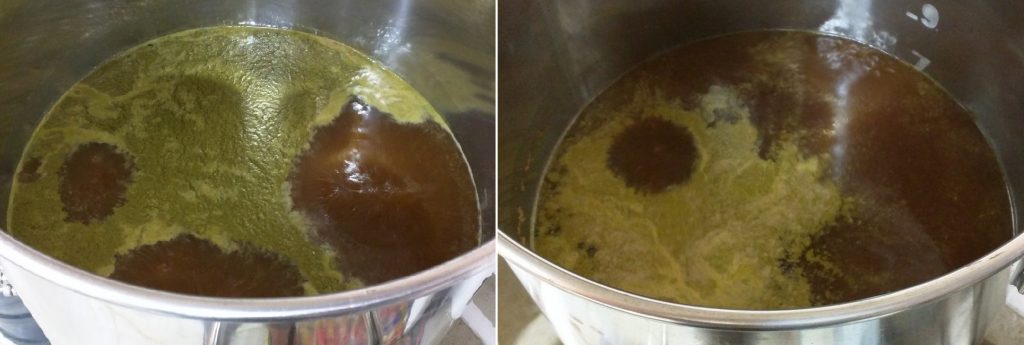
With 10 minutes left to go in the boil, I added a tab of Whirlfloc and put my immersion chiller in the wort to sanitize.
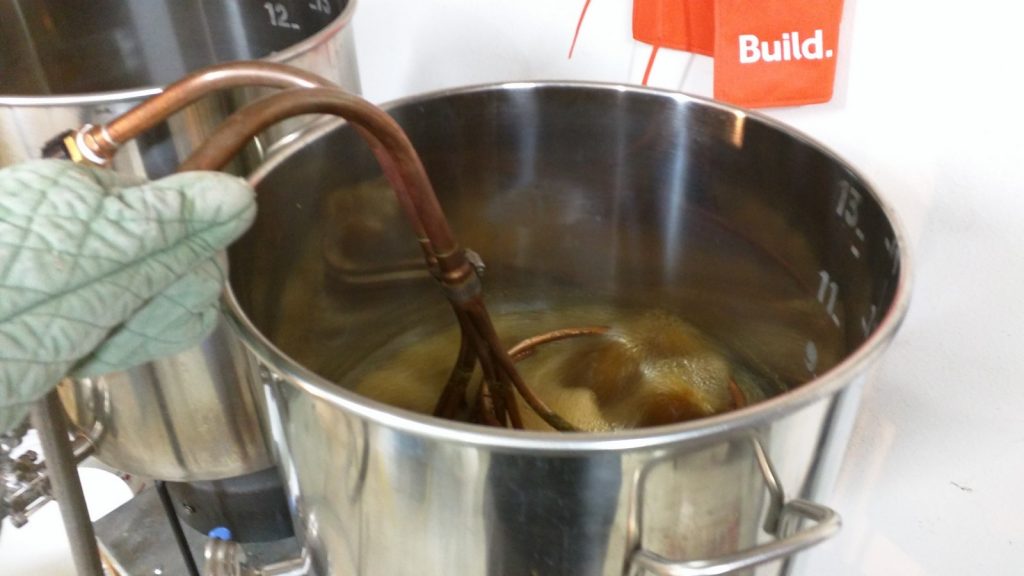
At the end of each boil, the wort was rapidly chilled to a few degrees above my groundwater temperature, which at this time of year is quite a bit warmer than my target fermentation temperature. The wort was split between two fermentors that were placed in my cool chamber to finish chilling. Hydrometer measurements at this point showed both worts were sitting at a similar OG.
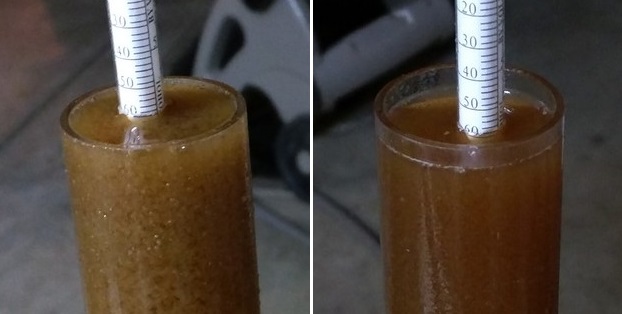
By the following morning, both had stabilized at 58°F/14°C so I rehydrated a pack of Saflager W-34/70 yeast for each batch then pitched.
About 36 hours later, a small kräusen had formed on both batches, leaving me confident healthy fermentation was underway.
I began gently ramping the temperature after about 2 days of fermentation and both beers appeared to progress similarly from there on. I noticed diminished airlock activity just shy of 2 weeks into fermentation and took hydrometer readings that confirmed both batches had reached FG.
Detecting no undesirable off-flavors in the hydrometer samples, I cold crashed the beers overnight, fined with gelatin, then kegged them a couple days later. Due to my busy work and family schedule, they spent nearly 3 weeks “lagering” in my keezer, becoming beautifully brilliant, before I was able to collect data.
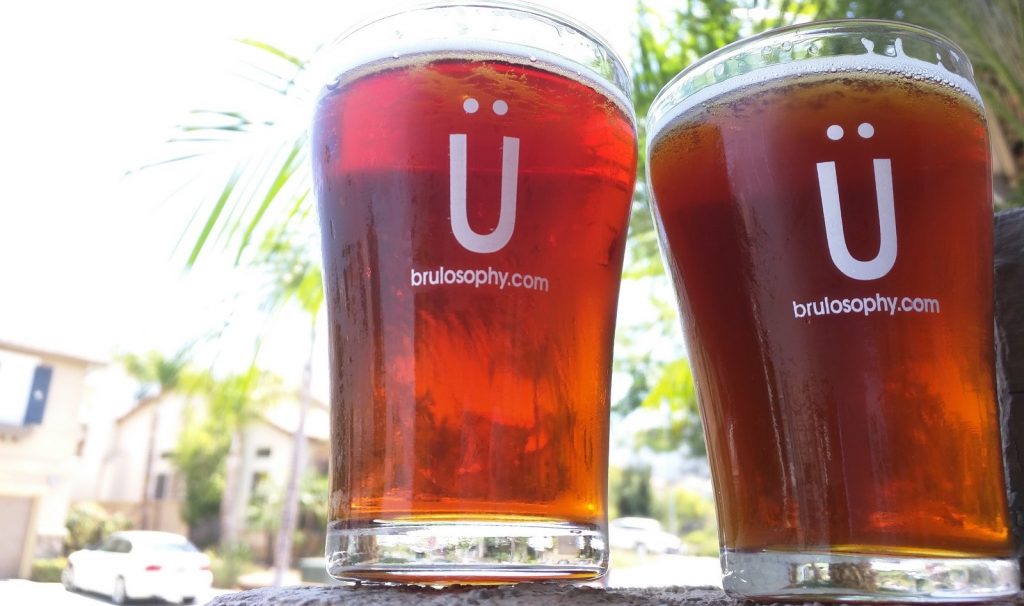
| RESULTS |
Huge thanks to the OC MashUps Homebrew Club for taking part in this xBmt! A club member named Kyle noticed my Brülosophy t-shirt during a flight we were recently on together and offered to let me crash a meeting to collect data. Always desperate for more panelists, I agreed and ended up having a fantastic time with a great group of homebrewers. I look forward to attending more meetings in the future!
In total, 17 people of varying experience levels participated in this xBmt. Each taster was served 1 sample of the beer bittered with Magnum and 2 samples of the beer bittered with Saaz in different colored opaque cups then asked to select the unique sample. In order to reach statistical significance with this number of participants, 10 (p<0.05) would have had to accurately identify the odd-beer-out, though only 8 (p=0.17) were capable of doing so. These results suggest tasters were unable to reliably distinguish a beer bittered with a lower amount of high AA% hops from one bittered with a higher amount of low AA% hops.
LAB ANALYSIS
Curious how accurate the IBU predicted by BeerSmith was and how close the Saaz and Magnum hopped beers were in terms of bitterness, I sent samples to Oregon Brew Lab for objective analysis. While both beers were designed to be 28 IBU using the Tinseth formula, lab results revealed the Magnum and Saaz bittered beers to be at 18 and 22 IBU, respectively. Given the how drastic the difference in the amount of hops used to bitter each batch, this seems pretty close to me. For fun, I compared the IBU predictions given by the three most commonly used formulas to the objective data. I’m not really sure what to think…
My Impressions: These beers were incredibly similar to me. As is common, I initially felt I could distinguish between the beers, though I was wrong as often as I was right in multiple semi-blind triangle tests. My biased impression was that the beer bittered with Magnum was slightly crisper and had a cleaner bitterness, while the Saaz bittered beer was ever-so-slightly softer in bitterness and had a more rounded character. I didn’t personally have a preference for either sample, which isn’t a big surprise since I couldn’t distinguish them from each other anyway. And as for the beer, it was good, but not the crushable, “oops-the-keg-is-empty” Vienna Lager I was aiming for, though it was a good starting place.
| DISCUSSION |
The fact tasters in this xBmt were unable to reliably tell apart a beer bittered with a small amount of Magnum from one bittered with a large dose of Saaz provides support for the idea that early kettle hop additions have a minimal impact on flavor and aroma. It’d be remiss of me to neglect acknowledging that the hops used were very similar on everything but AA%, and that a comparison of hops known to be more characteristically disparate may have produced different results. Until we get around to testing that out, I’m comfortable accepting that hops of generally similar character can be reasonably substituted for each other without significant impact on the beer, provided adjustments for AA% are made.
Perhaps playing to my own dogma, these results validate my habit of bittering nearly every beer I make with Magnum, something I do not only for consistency, but because I find the bitterness clean and pleasant. Moreover, in my personal experience, I’ve never noticed a perceptible difference between even classic lagers bittered with Magnum and those bittered with traditional low AA% hops.
One interesting difference I did notice between the beers is that the batch bittered with Magnum had a poorer head quality than the Saaz hopped batch, which I’m inclined to believe was a real effect since hops are known to contain foam-positive compounds. Still, that’s not enough to sway me, I’ll continue bittering most of my beers with Magnum as I prefer the fact I can accomplish the same goal using fewer hops, which saves me some coin and can result in increased yield.
If you have any thoughts about this xBmt, please do not hesitate to share in the comments section below!
Brülosophy Merch Available Now!
Follow Brülosophy on:
FACEBOOK | TWITTER | INSTAGRAM
If you enjoy this stuff and feel compelled to support Brulosophy.com, please check out the Support page for details on how you can very easily do so. Thanks!

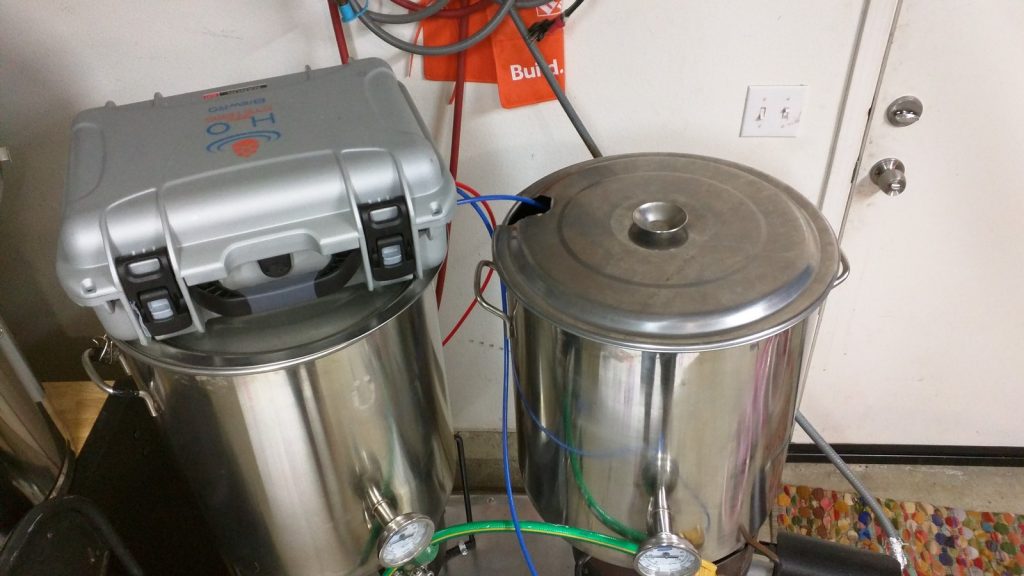
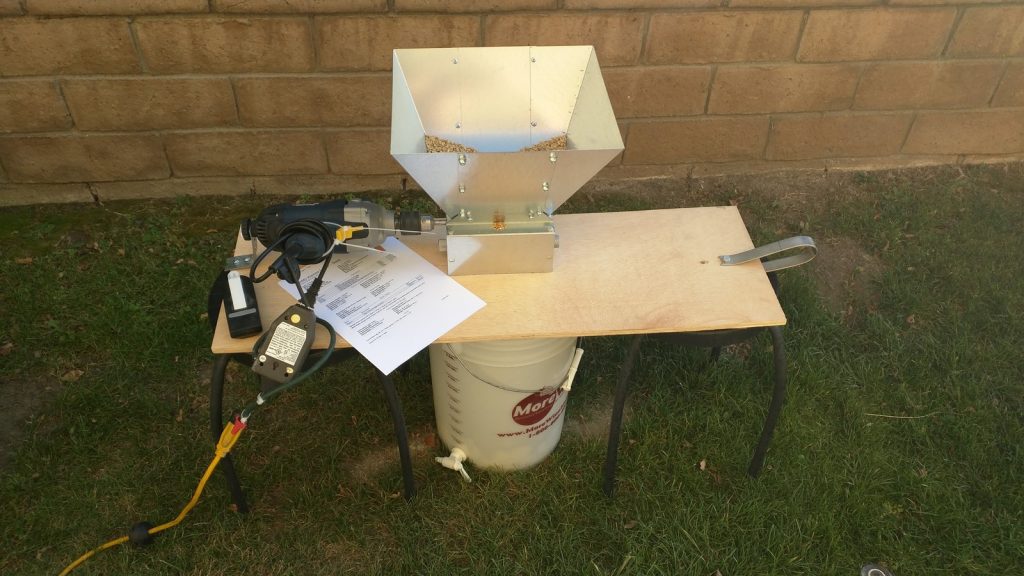
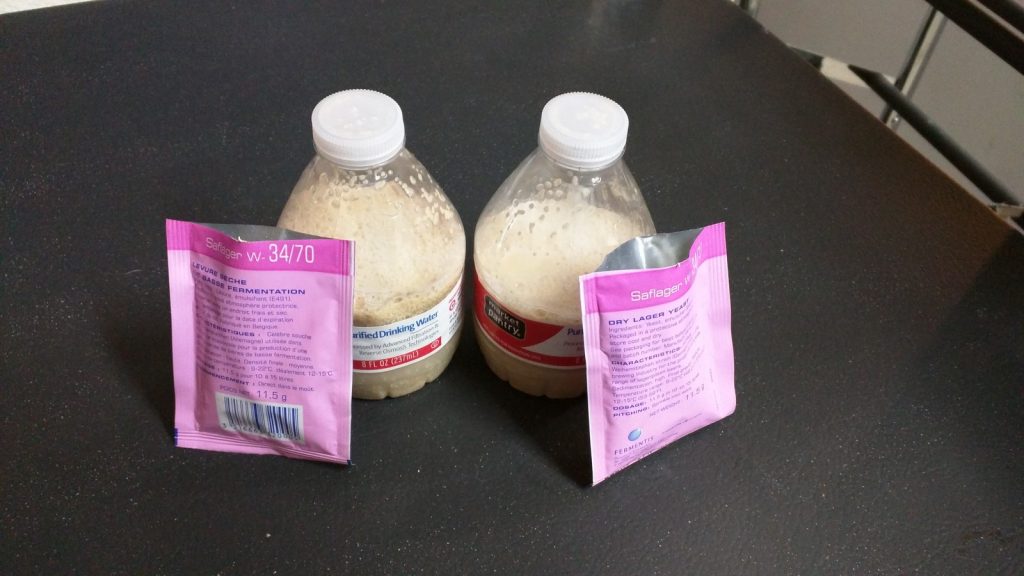
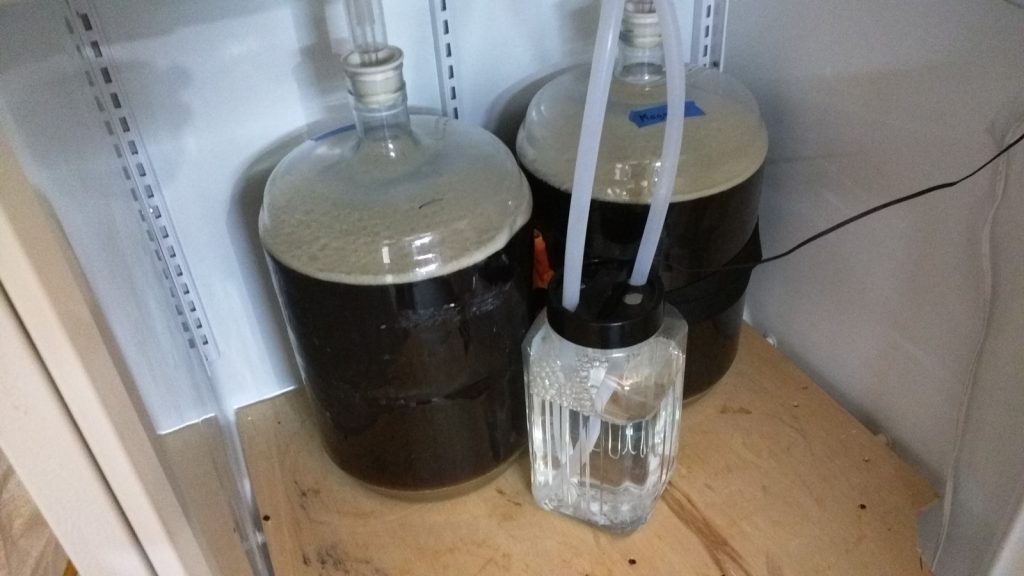
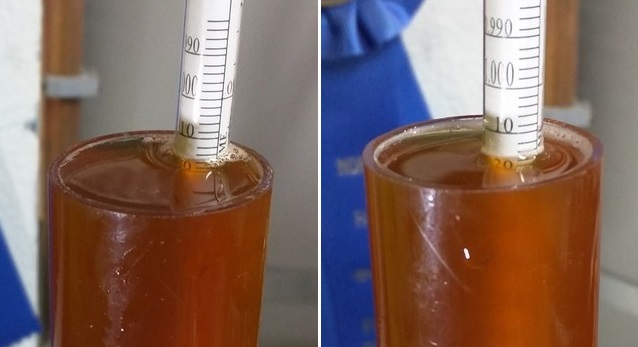












22 thoughts on “exBEERiment | Bittering Hops: High vs. Low Alpha Acid In A Vienna Lager”
I like Magnum and Horizon for clean bittering as well. I did a batch one time that had a large amount of low-alpha noble hops for bittering. They were whole cone hops though. I definitely got a good amount of hop character after a 60 minute boil. I think it depends on what kind of hops you use, how long they are in there, how vigorous the boil is, etc.
I haven’t bittered with anything but Magnum (except one beer which I use something else for because there’s a theme to it) for years. It is inexpensive, packs some punchy alpha acids, and tastes good. Some folks I know complain that it imparts too harsh a bitterness, to which I say: use less of it, then.
Really?! harsh bitterness from Magnum? Wow, they must be sensitive to something in it. I thought it was really clean and smooth. Maybe they did overdo it. I’ve been decreasing the amount of bittering hops more and more over time, and I am realizing that it doesn’t take much to balance a beer if you get it ferment out all of the simple (sweeter) sugars in the wort. I don’t need to actually taste the bitterness, which starts to happen when I start going over 30 IBU(calculated with Rager) or so.
Right, I use magnum almost exclusively for the reason that it is not a harsh bitterness to most people’s perception – in my experience.
Exception being for low hopped low gravity delicate beers where they would be traditionally hopped with a noble or EKG etc all the way through. I do this bc as I wonder if there may be a flavor aspect missing if the noble, ie Saaz, was not used.
I approve of your choice of style for this xBmt! ????????
Great writeup Ray. Thanks for letting me part of the exbeeriment. Keep up the good work.
If you’re looking for a recipe, I brewed a Vienna Lager based on this 2015 NHC gold winning recipe:
http://www.alternativecommutepueblo.com/2009/09/2015-vienna-lager.html
I adjusted everything up, for an OG of 1.072. It ended up very tasty, and smoother than expected.
Hi Ray,
Cool results. One question: in the article you say “lab results revealed the Magnum and Saaz …to be at 18 and 22 IBU, respectively.” But the chart reads Saaz: 18 and Magnum: 22. Which is which? Or did I misread? Doesn’t change the results but confusing.
Thanks again for sharing these. This one confirms what we “know”, but even that is very insightful. I especially love that you guys are getting lab results now too.
Thanks, Noah
Chart was mixed up. Magnum was 18IBU LAB, Saaz was 22… We’ll correct. Thanks.
I was expecting the Saaz to deliver a grassy or herbal note in that quantity for that long. Everything I thought to be true appears to be false. Next thing, you’ll run an exBEERament telling us the Earth isn’t flat, or some other ridiculous and blasphemous notion.
Hi Ray, Interesting post.
Question: On the hops’ AA, did you adjust for AA loss factors for each of the hops (there are formulas that will do this – and use adjusted AA for each into Beer Smith’s calculator), or use the AA listed on the packaging of each hop variety and input this into Beer Smith?
No – those hop-loss factors are for room-temperature hops… I store under vacuum and frozen.
According to a Mark Garetz article posted on MoorBeer in July 2015, there is AA loss over time with hops, even with perfect storage temperatures and conditions. Personal example with some excellent 2014 IndieHops, Santiam hop variety, bought through a local brewery. Assuming package AA of 7.9% was correct, it made a beer that was underhopped. Local brewery owner told me to “add more hops”… Yeah…but how much? After the fact, using the math Mark posted, it indicated my hops AA had dropped from 7.9% to under 5.5%. (In less than 2 years, with near perfect storage).
YCHHops (formerly Hop Union, etc.), one of the largest in the world, no longer lists their hop year on packaging. Also they take old hops, 3-4 years old, retest AA% and sell to hop brokers, etc. When purchasing hops it is important to know hop year, or retest date, if you want to adjust AA. Most home brewers just don’t know about the issue, and most that do – guess…and add a percentage of extra hops. Anyhow, I see this as an issue and am avoiding hops where I can’t tell when they were tested.
When I saw your beer IBU (both batches) being off fairly dramatically, I assumed it could be a combination of AA loss over time, combined with the Tinseth IBU formula inaccuracies. Interesting question…
Hi Ray, exactly the exbmt I was looking for today ! I guess the results depend a lot on the efficiency of the boil. What is your evaporation % ?
That batch would have been about 1.5 gallons of boiloff, starting with 7 gallons wort.
I’ve since moved to larger kettles, so my new boiloff rate is 2.6GPH.
You might want to take a look at this thread I link below regarding your bitterness numbers, it starts off about recreating a historical version of a beer but about quarter of the way through Graham Wheeler, author of some of the most well regarded British home brewing books over the years, chimes in with some really interesting information about Tinseth etc the flaws in them and the fact the Tinseth actually calculates ex copper bitterness, i.e. Not what you end up with post fermentation.
Defnitely worth a read.
http://www.forum.craftbrewing.org.uk/viewtopic.php?f=62&t=8737&start=25
Great write up, thanks for doing this!
Cool experiment. It would be interesting to try this with a more “flavorful” hop. Magnum is known for clean bittering. I wonder if Columbus vs. Saaz would yield the same results…
That’s more akin to our Part 1 –
I’ll have to check that out. Thanks!
I did something similar to this last year, not intentionally though. I brewed a Bo Pils but didn’t have enough Saaz, so what Saaz I did have (50g) went in as a late boil addition, and the rest of the bitterness was done with a 60 minute Magnum addition. Then I got in a large order of Saaz and brewed the recipe again, albeit slightly different grain bill. This one featured 100g of Saaz early, evenly split between FWH and 80 minutes, plus the existing 50g late in the boil. These two beers were remarkably different; the all Saaz version definitely had a lot more of that distinctive flavour than the one bittered with Magnum. Maybe the other Saaz used in the first recipe was a bit old or something I don’t know, but either way I’ve continued to brew these beers with all Saaz hopping since with excellent results.
Seems like once again an experiment where insufficient sample size limits your power to detect a potential difference.
The difference in measured IBU could easily be influenced by several factors, such as the alpha acid percentage (which is often measured by lots) not exactly matching the average percent alpha acids in the bag of hops used for the brew, or the potential difference in alpha acids remaining after storage for unknown amounts of time with differeing storage indexes.